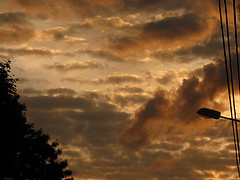The newest crop of 2010 Earth and Ocean Science Undergraduate Honours Theses and Reports are now available online on cIRcle, the UBC Library’s Digital Repository.
Below is a list of 2010 submissions.
Waste Solutions for Metro Vancouver
Ho, Anthony; MacDonald, Jessica; Lam, Clement; Dean, Monika; Lai, Joseph; Lu, Nan; Sim, Nari (2010-05-07)
Effects of Triclosan on a Detrital-Based, Aquatic Food Web
Chan, Carita (2010-05-07)
Ecosystem Services of the British Columbia Coast: Modeling the Impacts of Agriculture on the Provision of Shellfish
Solomon, Cody; Thompson, Allison (2010-05-05)
Slope Stability Analysis of Fly Ash Containment Dyke
Brisbin, Aaron (2010-04-27)
Mechanical strength of Anhydrite and its Role in the Seismicity of the Duke River Fault, Yukon Territory
Sampaleanu, Christian (2010-04-22)
Delineation of Groundwater Capture Zone for the Grum Pit, Faro Mine Complex, Yukon Territory
Yungyoo, Thiyapa (2010-04-19)
The Classification and Analysis of 300 Cycling Crashes that Resulted in Visits to Hospital Emergency Departments in Toronto and Vancouver. Frendo, Theresa (2010-04-15)
Sensitivity Analysis of UBCDFLOW and Debris Flow Travel Distance in Mountainous Forested Terrain around the Kootenay, British Columbia Region. Kurylo, John Bohdan (2010-04-13)
Investigation of Liquid Limit of Kamloops Silt by Soft-base Casagrande Apparatus and British Drop-Cone Penetrometer.
Lu, Alan Zhong (2010-04-12)
Identifying Landscapes and their Formation Timescales: Comparing Knowledge and Confidence of Beginner and Advanced Geoscience Undergraduate Students. Jolley, Alison Rae (2010-04-07)
Stability and Seepage Analysis of the Bralorne Gold Mines Tailings Dam Following a Change in Usage from Tailings Dam to Water Reservoir Dam. Lefrancois, Anne-Marie (2010-04-01)
An Assessment of the Greywater and Composting Toilet Tea Leach Field Geochemistry at the C.K. Choi Building, University of British Columbia Vancouver Campus. Larson, Leila (2010-02-17)
Submitted by Kevin Lindstrom Liaison Librarian for Earth and Ocean Sciences at the University of British Columbia.


